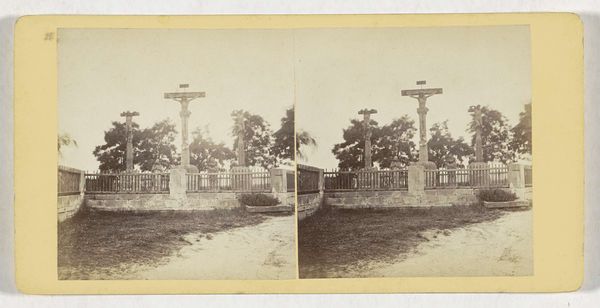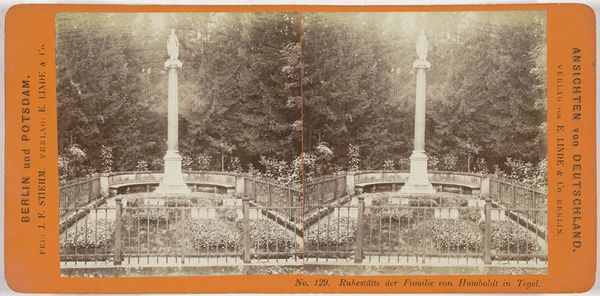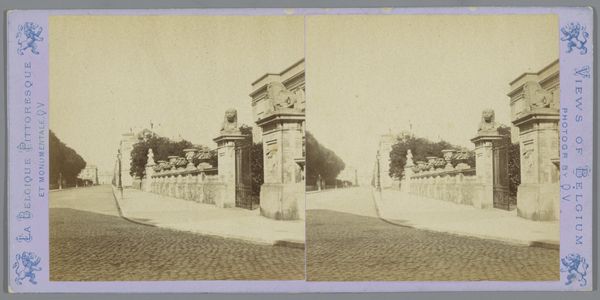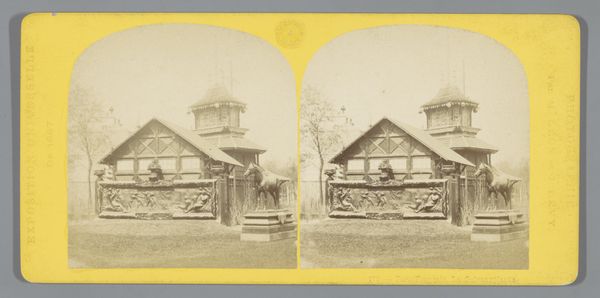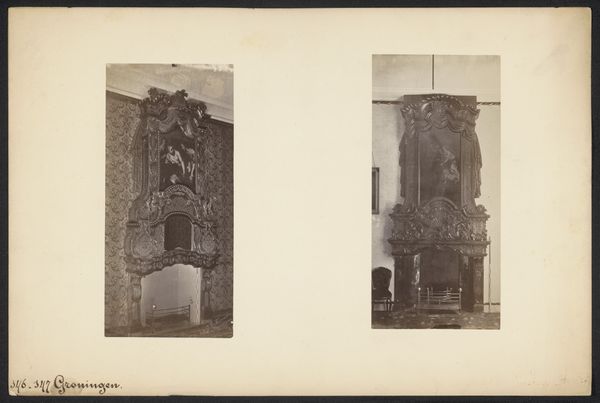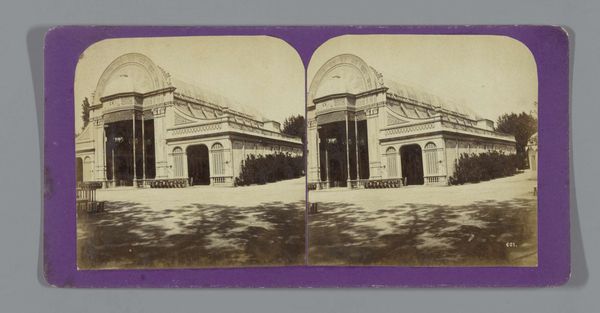
Grafmonument van Peter Vischer op de Johannesbegraafplaats, Neurenberg 1868 - 1888
0:00
0:00
photography, gelatin-silver-print
#
portrait
#
landscape
#
photography
#
gelatin-silver-print
Dimensions: height 87 mm, width 177 mm
Copyright: Rijks Museum: Open Domain
Curator: Looking at this image, my immediate thought is how peaceful the scene feels. A little melancholic, of course, but definitely serene. Editor: Indeed. We're examining a gelatin silver print taken between 1868 and 1888 by Johann Friedrich Stiehm. It’s titled "Grafmonument van Peter Vischer op de Johannesbegraafplaats, Neurenberg," which translates to “Grave monument of Peter Vischer at the St. John’s Cemetery, Nuremberg." It presents a photograph of Vischer's elaborate monument nestled in the cemetery's landscape. Curator: A monument within a field of more modest markers, I see! So the scale, the grandeur... they're really emphasized. It speaks to a celebrated life, or at least a legacy meant to endure conspicuously. I wonder how that contrasted with the lives, and deaths, of those surrounding his memorial? Editor: Exactly! It is impossible to remove these markers from the history of Nuremberg. Vischer's work coincided with the Reformation and his patrons demanded reform within art guilds so they could accept Protestant artisans. Curator: Wow. That's an angle I never would have considered. I was caught up in the personal reflection, the artistry itself... But context completely transforms my understanding of this visual document. A negotiation, a moment of transition! Editor: Stiehm's capture then, is not simply a picturesque scene but rather the relic of complex negotiations. He made portraits and landscapes too, as this artwork evidences with the other grave markers in the frame! These landscapes, these very still portraits in burial sites reflect a sense of permanence. Curator: So the cemetery isn't just background, it’s the collective stage upon which Vischer’s individual story, and Nuremberg’s social narratives, play out. Editor: Precisely. We consider Stiehm as simply making a portrait of landscape and a historical figure’s headstone but, he is inviting us to think about reform, class, and privilege! Curator: Well, I stepped into this expecting tranquility, but I'm walking away with a head full of complex societal conversations. I love when art ambushes you like that! Editor: The beauty of intersectional analysis, always challenging assumptions! It invites us to consider what visual and textual traces can lead to deeper understandings of power, conflict and even resistance within an image.
Comments
No comments
Be the first to comment and join the conversation on the ultimate creative platform.
